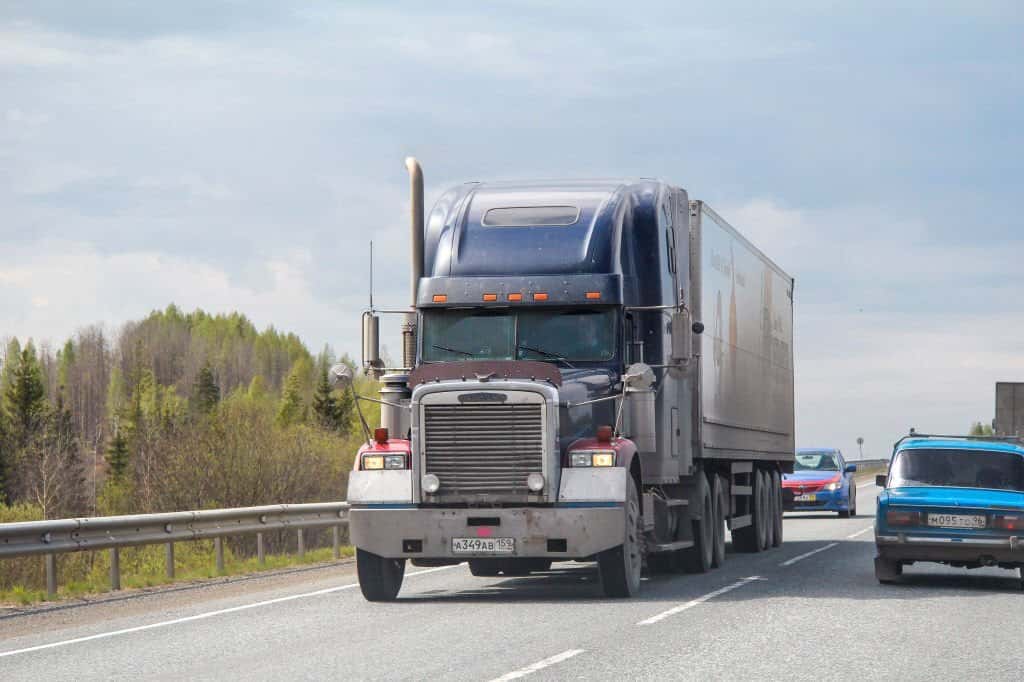Freightliner collision avoidance system problems do happen – although they are not very common.
Although this breakthrough feature is designed to keep drivers safe while on the road, there are some issues that come along at one point or another. This collision avoidance system makes use of the foundation brakes of your vehicle, which enables the deceleration each time there is a compromised preset distance.
This feature has become available in these vehicles for several years now, and it is meant to detect objects as distant as 500 feet away. Then, it coordinates responses from your transmission, anti-lock braking systems, and your engine. There is also an in-cab dashboard display that offers a continuous alert to drivers.
Find out more about the common issues that come with this feature and everything else you need to know about it. Let’s get started.

Common Freightliner Collision Avoidance System Problems
This safety feature has been added and installed on several thousands of trucks. Moreover, there have been further improvements done to it over the years. Thus, it helps to promote vehicle safety by protecting – and preventing – motorists from going through crashes.
The Insurance Institute for Highway safety and the Department of Transportation have agreed on the overall effectiveness of this system in preventing crashes for vehicles. For instance, the electronic stability control technology minimizes the chances of rollover accidents to as much as 80 percent, as well as fatal accident risks by more than 30 percent. As for front crash prevention systems, this can minimize insurance claims done by individuals and companies for bodily injury by as much as 29 percent.
On the other hand, as sophisticated as these safety systems may be, it is a fact that you cannot completely and purely rely on these for safety. They do protect motorists from injuries and accidents, yet these systems can fail sometimes.
For instance, the system can – and does – malfunction. As with other parts of your vehicle, there can be defects to the system, which leads to malfunctioning. When you rely on this technology for crash and collision avoidance, and you are so dependent on it, then it is possible to not pay as close attention to the road as possible.
As an example, when you come close to an obstacle or another vehicle, yet you do not hear any warning signal because the system has malfunctioned, you may not react as you normally would since the warning has not come on.
Furthermore, when you have a malfunction to the collision avoidance system, and the brakes are applied when not needed, it can increase the risk of a collision. The vehicle may also steer as a means of avoiding a threat that the system has detected even if there is really none.
Next, the weather condition can also impact the performance of the collision avoidance system. The sensor, for instance, which detects a possible crash or collision may fail during a severe weather such as fog, snow, rain, or sleet. Because these are the very same types of conditions that often cause crashes, when the technology fails, this renders it useless.
And last but not least, these safety systems cannot – and will not – compensate for any negligence of the driver. Regardless of the effectiveness of your collision avoidance system, it is not capable of preventing accidents that other negligent drivers have caused.
So, even if you have this technology installed in your vehicle, it is still very important to be alert, cautious and vigilant when driving to prevent accidents.
Read More: Common Freightliner Speed Sensor Problems And Solutions
Is it Worth It?
Collision avoidance systems or pre-crash systems in Freightliners are intelligent technologies that help to reduce how severe the collision is and even prevent the chances of such accidents.
Basically, this monitors your speed, as well as the other vehicle’s speed in front of you, and the distance between you and the other vehicle. Then, taking all of these elements into consideration, it sends out a warning to you when you are too close to the vehicle. As a result, this helps in avoiding a crash.
There are also some all-weather radar sensors and cameras used to detect a potential crash. In some countries, this technology has become mandatory, and there are companies that have made it a standard in modern vehicles.
Considering the benefits it offers when it comes to warning drivers about an imminent crash, this proves to be a helpful feature in a vehicle. However, the problem lies when the system malfunctions and sends out the wrong alerts that can cause more harm than good to you and the other vehicle.
This is why although this system is beneficial, it is still important to be cautious when on the road and trust your judgment while at the same time using this technology as a guide.